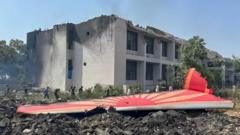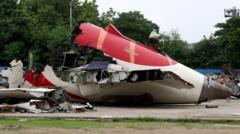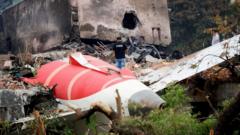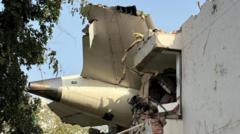The crash of an Air India flight in Ahmedabad, which claimed over 270 lives, reveals the precarious situation faced by urban dwellers near busy airports in India. With air traffic doubling amidst rapid urbanization, residents find themselves increasingly at risk as cities expand dangerously close to aviation hubs.
Rising Risks: Urban Expansion Threatens Safety Around Indian Airports

Rising Risks: Urban Expansion Threatens Safety Around Indian Airports
A tragic plane crash highlights the dangers of overcrowded urban areas surrounding India's airports, reflecting the clash between rapid growth and infrastructural limitations.
In a tragic incident on June 19, 2025, Bhavesh Patni's lunch with family took a turn when an Air India flight crashed into the medical college campus adjacent to their home in Ahmedabad, killing 241 on the plane and 34 on the ground. As he watched the flames from his terrace, he was reminded of the constant threat that proximity to the busy airport poses to families living in densely populated neighborhoods. This sobering event illustrates a growing challenge faced by India, where the rise of air travel has not been matched by improvements in urban infrastructure.
With a population of over 1.4 billion, India is experiencing a surge in air passenger traffic, which has doubled in the last decade alongside an increase in airports. However, the rapid expansion of aviation infrastructure has often come at the expense of urban planning, with little regard for the safety of residents living in close quarters to these busy air transport hubs.
The architecture of Indian cities frequently allows for scant buffer zones between residential areas and vital transport facilities, putting thousands of lives at risk during critical moments such as takeoffs and landings. As India’s ambitions soar upwards, the question remains: how can the country balance its need for connectivity with the safety of its citizens?






















